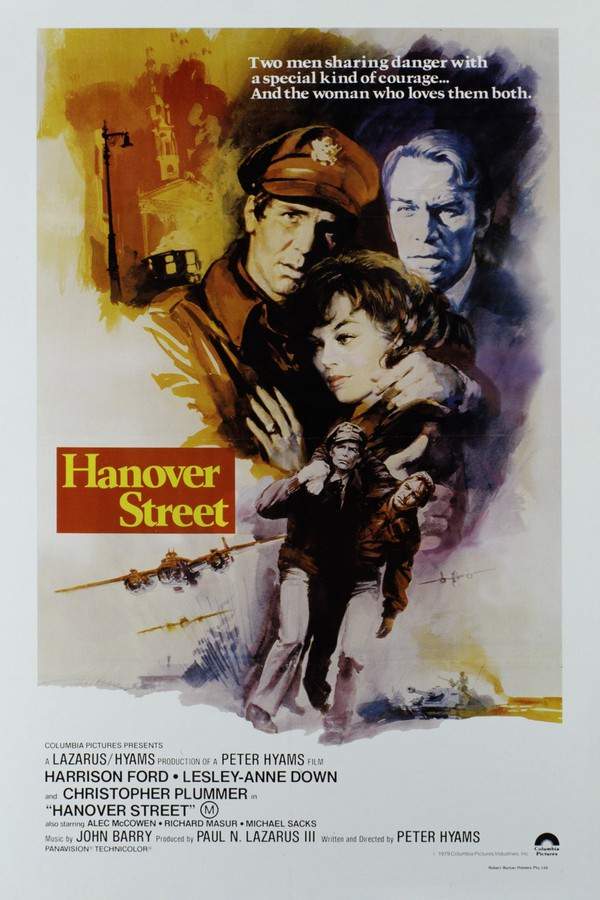
Back Street
Year: 1932
Runtime: 93 mins
Language: English
Director: John M. Stahl
A gripping drama that showcases powerful emotional appeal, adapted from one of America’s foremost novelists. Featuring an outstanding cast of star performers, it follows a woman whose love and devotion to a married man lead her to be pushed into the “back streets” of his life, exploring themes of sacrifice, longing, and the hidden costs of forbidden affection.
Warning: spoilers below!
Haven’t seen Back Street yet? This summary contains major spoilers. Bookmark the page, watch the movie, and come back for the full breakdown. If you're ready, scroll on and relive the story!
Back Street (1932) – Full Plot Summary & Ending Explained
Read the complete plot breakdown of Back Street (1932), including all key story events, major twists, and the ending explained in detail. Discover what really happened—and what it all means.
Set in the early 1900s in Cincinnati, Ray Schmidt, Irene Dunne, is a striking young woman who splits her days between her father’s shop and late-night socializing, drinking beer and dancing with various men. Her stepmother, Jane Darwell, disapproves of this lifestyle, and Ray treats dating as light amusement rather than a path to commitment. One option she rejects is Kurt Shendler, who runs a bicycle shop near Ray’s family business and dreams of entering the automobile industry; Kurt, George Meeker, asks for her hand, but Ray does not share his romantic feelings and declines the proposal.
While at the train station with Kurt, Ray meets Walter D. Saxel, John Boles, and they fall for each other at first sight. Walter soon confesses that he is already engaged to another woman in town, Corinne Saxel, Doris Lloyd, whose mother is friends with Walter’s mother. Despite his engagement, Walter’s love for Ray grows, and he asks her to join him at a local band concert with his mother, hoping to introduce her to his family and win her approval. On the day of the concert, Ray is pulled away by family trouble when her younger half-sister Freda, June Clyde, is suicidal over her boyfriend Hugo and begs Ray to intervene. Ray wrestles with Freda’s crisis and still rushes to the concert, only to find that Walter and his mother have already left; seeing no one, Walter assumes Ray stood him up and responds with a bitter letter, after which he marries Corinne.
Years pass, and Walter becomes a rising Wall Street financier. He and Ray unexpectedly meet again in New York, realizing their love endures even as Walter remains married with two children. Walter tries to keep Ray close by providing a modest apartment and urging her to quit her job so she can be free to see him whenever his schedule allows. But the pressures of his work, his family, and his social obligations keep him away, and Ray feels increasingly isolated. After a European trip with his wife, Walter leaves Ray in a difficult financial situation, prompting her to accept Kurt’s proposal again; Kurt has since become a wealthy automobile manufacturer. When Walter returns, the two resume their clandestine relationship, though they must avoid public scrutiny and gossip intensifies around Ray.
As the years roll on, Walter’s public success deepens while the private relationship remains fraught with secrecy. Walter’s adult children see Ray as a possible gold digger, and the tension culminates when his son Dick, William Bakewell, tells Ray to step away from the family. Walter intervenes, urging his son to be more understanding, if only for appearance’s sake. Then Walter suffers a massive stroke and dies soon after. Before passing, he asks Dick to call Ray; Dick, who finally grasps his father’s true feelings, travels to see her and learns that his father had been paying Ray only a small monthly sum, a revelation that underscores Ray’s choice to stay with Walter for love, not money.
After this visit, Ray’s world collapses with grief. Dick, moved by the truth of his father’s sacrifice, offers to continue supporting Ray, but the emotional toll remains immense. Ray dies shortly after, gazing at Walter’s picture in a quiet, bittersweet close to a life shaped by longing, social judgment, and the quiet endurance of love that defied circumstance.
Last Updated: October 09, 2025 at 11:20
Unlock the Full Story of Back Street
Don't stop at just watching — explore Back Street in full detail. From the complete plot summary and scene-by-scene timeline to character breakdowns, thematic analysis, and a deep dive into the ending — every page helps you truly understand what Back Street is all about. Plus, discover what's next after the movie.
Back Street Timeline
Track the full timeline of Back Street with every major event arranged chronologically. Perfect for decoding non-linear storytelling, flashbacks, or parallel narratives with a clear scene-by-scene breakdown.

Similar Movies to Back Street
Discover movies like Back Street that share similar genres, themes, and storytelling elements. Whether you’re drawn to the atmosphere, character arcs, or plot structure, these curated recommendations will help you explore more films you’ll love.
Explore More About Movie Back Street
Back Street (1932) Scene-by-Scene Movie Timeline
Back Street (1932) Movie Characters, Themes & Settings
Back Street (1932) Spoiler-Free Summary & Key Flow
Movies Like Back Street – Similar Titles You’ll Enjoy
Back Street (1941) Film Overview & Timeline
Back Street (1961) Full Summary & Key Details
Street of Women (1932) Detailed Story Recap
Street Scene (1931) Detailed Story Recap
Street of No Return (1989) Full Summary & Key Details
Grief Street (1931) Story Summary & Characters
Back Pay (1922) Detailed Story Recap
Side Streets (1934) Spoiler-Packed Plot Recap
Love Street (2002) Full Movie Breakdown
Street Angel (1928) Movie Recap & Themes
Hanover Street (1979) Detailed Story Recap
Dream Street (1921) Movie Recap & Themes
Street of Shadows (1953) Spoiler-Packed Plot Recap
Back to Even (1998) Story Summary & Characters
Uptown New York (1932) Ending Explained & Film Insights

















